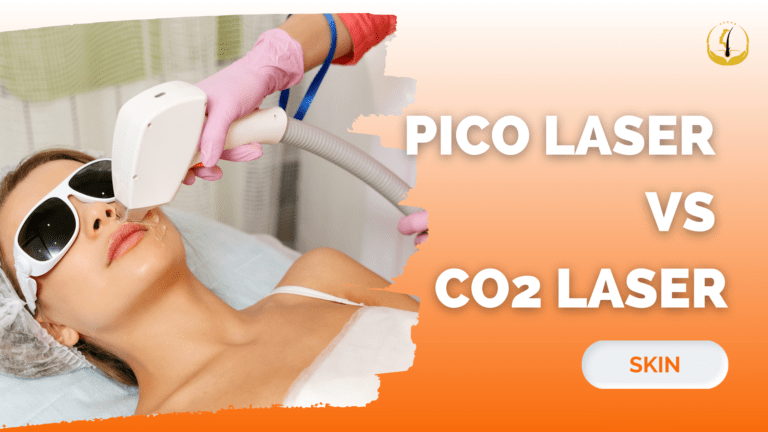In the dynamic world of medical aesthetics, advancements continue to unfold, offering a myriad of options for skin rejuvenation and treatment. Two standout technologies, Pico lasers, and CO2 lasers have taken center stage, revolutionizing dermatological practices. Let’s delve into the details of these cutting-edge technologies, unraveling their unique features, benefits, and the ideal scenarios for their application.
Pico Laser: Precision and Versatility
Pico lasers mark a groundbreaking development in cosmetic dermatology, celebrated for their unparalleled precision and versatility. Employing ultra-short bursts of energy measured in picoseconds, these lasers target specific pigments in the skin. Their exceptional ability extends to diverse concerns, including tattoo removal, pigmentation issues, fine lines, and acne scars.
The distinguishing feature of Pico lasers is their minimal downtime. Unlike some counterparts, they cause less damage to surrounding tissues, ensuring faster recovery periods. This makes Pico lasers a preferred choice for individuals with active schedules, seeking treatments without extended interruptions.
CO2 Laser: Harnessing the Power of Precision
CO2 lasers leverage carbon dioxide to deliver controlled ablation, facilitating the removal of tissue layers. Long-associated with remarkable results in skin resurfacing and rejuvenation, CO2 lasers precisely vaporize damaged skin layers. This process stimulates collagen production, resulting in smoother, tighter, and more youthful skin. CO2 lasers shine in treating deep wrinkles, scars, and severe sun damage.
While the downtime associated with CO2 laser treatment is relatively longer compared to Pico lasers, many find the impressive results achieved to justify the extended recovery period.
Comparing Pico Laser and CO2 Laser
- Precision and Targeting:
- Pico lasers excel in addressing specific pigments, making them ideal for hyperpigmentation, melasma, and tattoo removal.
- CO2 lasers are better suited for overall skin resurfacing and treating larger areas.
- Downtime and Recovery:
- Pico lasers offer minimal downtime due to precise targeting and minimal damage to surrounding tissues.
- CO2 lasers necessitate a longer recovery period but often yield more dramatic results in terms of skin tightening and resurfacing.
- Skin Concerns:
- Pico lasers are versatile, addressing pigmentation irregularities, fine lines, and acne scars.
- CO2 lasers excel in treating deep wrinkles, severe sun damage, and scars.
- Sessions Required:
- Pico laser treatments may require multiple sessions for optimal results.
- CO2 laser treatments may deliver noticeable improvements in a single session.
In conclusion, Pico lasers and CO2 lasers represent groundbreaking technologies, each with unique strengths. Pico lasers offer precision and minimal downtime, making them ideal for specific pigment-related concerns. CO2 lasers, with their controlled ablation and collagen-stimulating effects, excel in resurfacing and rejuvenation on a deeper level. The choice between Pico laser and CO2 laser depends on individual skin concerns, desired outcomes, and tolerance for downtime. Consulting with a qualified dermatologist is crucial to determine the most suitable treatment approach and achieve desired results.

